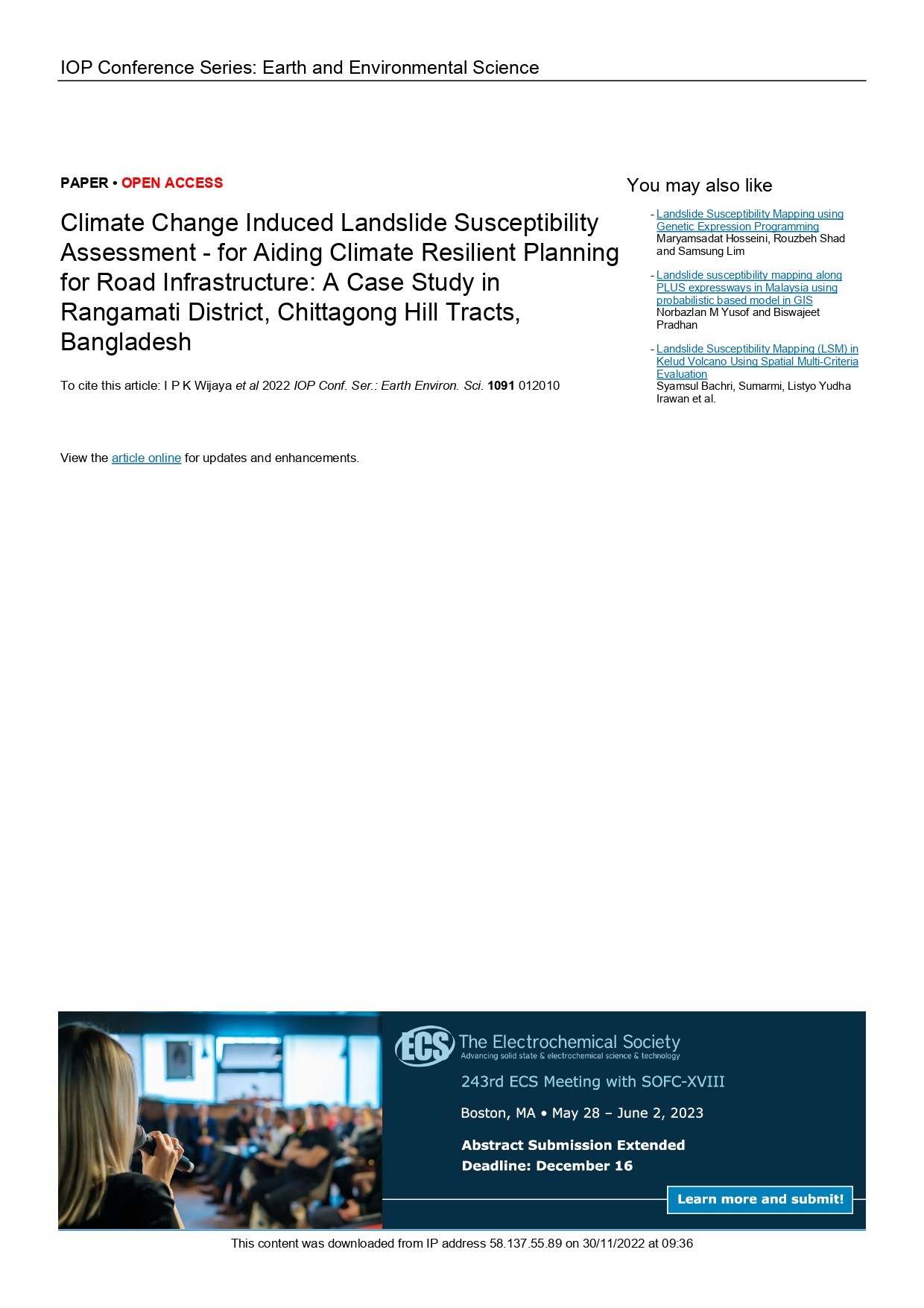This research paper on Bangladesh landslide risks examines the escalating occurrence of landslides in the vulnerable Chittagong Hill Tract districts, including Rangamati, caused by extreme hydro-meteorological conditions resulting from climate change. These landslides have inflicted significant damage on vital transportation infrastructure such as roads and bridges. The study specifically focuses on evaluating the susceptibility of landslides in the Rangamati district in response to extreme rainfall events, considering various climate change scenarios.
To accomplish this, the researchers generated high-resolution 1km x 1km downscaled projections of extreme rainfall for the baseline period of 1976-2005 and future timeframes: 2030s, 2050s, and 2080s, based on the Representative Concentration Pathway (RCP) 4.5 and RCP 8.5 scenarios. They employed a combination of the Frequency Ratio (FR) and Analytical Hierarchy Process (AHP) techniques to create maps and conduct analyses of landslide susceptibility. The study considered nine multivariate factors as contributors to landslides, including terrain slope, aspect, elevation, lithology, soil composition, distance from lineaments, distance from streams, land use patterns, and mean annual rainfall, examining them across four different time periods for the respective RCP scenarios.
In total, seven landslide susceptibility maps were developed and categorized into five distinct susceptibility classes. The accuracy of these models was validated using the Receiver Operating Characteristic curve (ROC) approach, yielding a satisfactory result with accuracy rates ranging from 80% to 86%.
Learn about Bangladesh landslide risks in this Asian Disaster Preparedness Center (ADPC) research paper titled: Climate Change Induced Landslide Susceptibility Assessment – for Aiding Climate Resilient Planning for Road Infrastructure: A Case Study in Rangamati District, Chittagong Hill Tracts, Bangladesh
Research citation: P K Wijaya et al. 2022 IOP Conf. Ser.: Earth Environ. Sci. 1091 012010
The research paper was published online by IOP Publishing Ltd as part of its Conference Series on Earth and Environmental Science. The original research paper link is available here.

